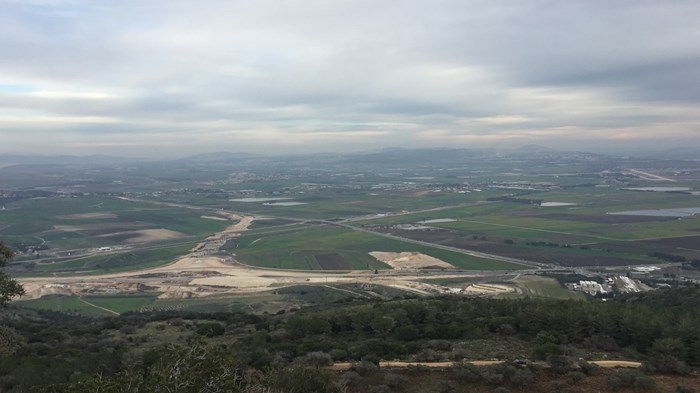War Language as Hyperbole: "Total-kill"

There is a trope among basketball players that, when they make a very quick move that fakes out their opponent, “they have broken the guy’s ankles.” Not really. It’s hyperbole, an exaggeration that permits the man making the fake glory in his accomplishment. His fans all clap. The opponent is thereby shamed.
Old Testament war language often trades in hyperbole, and William Webb and Gordon Oeste have a two-chapter section on “total kill” hyperbole in Bloody, Brutal, and Barbaric?
Hyperbole:
This [how ANE kings strut their stuff after a victory] should alert us to the fact that ANE battle accounts could at times overstatethe severity of a defeat or gloss over an unsuccessful battle to paint the bestpossible portrait of the king.
It is in this process that figurative language or hyperbole could help a king put the best face on his military accomplishments without falsifying the essential gist of the events. Hyperbole is a common literary and rhetorical device that uses emotionally charged overstatement to persuade an audience of a particular point. As the following brief survey will show, ANE kings and scribes made use of several different forms of overstatement (or understatement in the case of a defeat or setback) to offer the brightest picture of their accomplishments.
How so? What are the common forms of this total kill hyperbole?
Number inflation
Speed of victory
Severity of battle or fear induced
Geographical extent of victory
Attribution of victory to the king himself (or God)
Read this account by an ANE conqueror:
I decisively defeated them. I annihilated them. I scattered their substantial auxiliary troops; and I broke up their troop contingents. I captured those who attempted to escape. I caused their blood to flow like waters of a river. The road with their corpses was visible to the eagles and vultures. I filled the mountains and wadis with their skulls like mountain stones. Birds made nests in their skulls.

Armageddon anyone? (Article image above)
Webb and Oeste conclude by putting this altogether like this:
ANE scribes could accentuate the speed at which victory took place (speed hyperbole) or the number of troops involved in a battle (numerical hyperbole) to emphasize a king’s military prowess. They could relate the complete annihilation of the enemy while later history shows that this was not the case or while even the same battle account acknowledges the presence of survivors (severity hyperbole). ANE battle reportage at times claimed the conquest or control of entire regions or people groups when other data (either within the battle report itself or other historical information) indicates that the victory was not as complete as described (extent hyperbole). Sometimes such war victories are ascribed solely to the king when he was clearly accompanied and aided by his army (attribution hyperbole).
Here’s the big takeaway for Bible readers with at least a sensitive conscience about this:
War-genre hyperbole complicates the reading of ancient battle reports for modern readers attempting to understand ancient accounts, but awareness of these techniques becomes a hermeneutical key for correctly reading descriptions of warfare in the Old Testament.
One might say they “broke their ankles” but the reality is they ran away. If you are looking in the ditches for broken ankles you’re missing the point. So Webb-Oeste:
No longer is the object of Israel’s warfare against the Canaanites to kill (literally) every man, woman, and child, combatant and noncombatant alike, as many readers have thought. Rather, the conquest of Canaan meant defeating the Canaanite armies in battle and driving out of the land at least a significant portion of the Canaanite population. Did the biblical authors in fact think and talk about warfare in hyperbolic terms, similar to what we saw in the last chapter on ANE war language? [Yes]
Which is how Deuteronomy 7:1-2 then could be read (should be read):
When the LORD your God brings you into the land that you are about to enter and occupy, and he clears away many nations before you—the Hittites, the Girgashites, the Amorites, the Canaanites, the Perizzites, the Hivites, and the Jebusites, seven nations mightier and more numerous than you— and when the LORD your God gives them over to you and you defeat them, then you must utterly destroy them. Make no covenant with them and show them no mercy.
Not only does history show texts like this, and those in Joshua (eg., Josh 11:14), but the texts themselves show that people survived. These kinds of statements about total kill were hyperbolic, and we learn this by reading the texts carefully enough to notice differences. Thus:
Joshua 6; 8; 10:42 give the impression of a speedy conquest, while passages such as Joshua 11:18; 16:10; 17:13; Judges 1 suggest a more protracted process of taking possession of Canaan.
Joshua 21:44 says that none of Israel's enemies withstood them, and passages such as Joshua 10:33,37,38-39,41 suggest that Israel destroyed entire cities without leaving any survivors. However, passages such as Joshua 13:13; 16:10; 17:13 indicate that some of the original inhabitants of Canaan did resist, and passages such as Joshua 15:13-14,15-16,63;17:16; 23:7,12-13 indicate that Israel did leave survivors in cities elsewhere described as completely annihilated with no remaining survivors.
Passages such as Joshua 11:16-47,23; 21:43 suggest Israel conquered the entire land of Canaan, but others, such as Joshua 13:1-5; 15:13-14,63;16:10; 17:12-13, indicate that Israel did not completely conquer the entire land of Canaan.
God’s commands, then, are also hyperbolic.
Recognizing hyperbole in these accounts then reduces the severity and shows that genocide did not take place. Incremental redemptive moves will be sketched on this blog in a post down the road.
Jesus Creed is a part of CT's
Blog Forum. Support the work of CT.
Subscribe and get one year free.
The views of the blogger do not necessarily reflect those of Christianity Today.


















